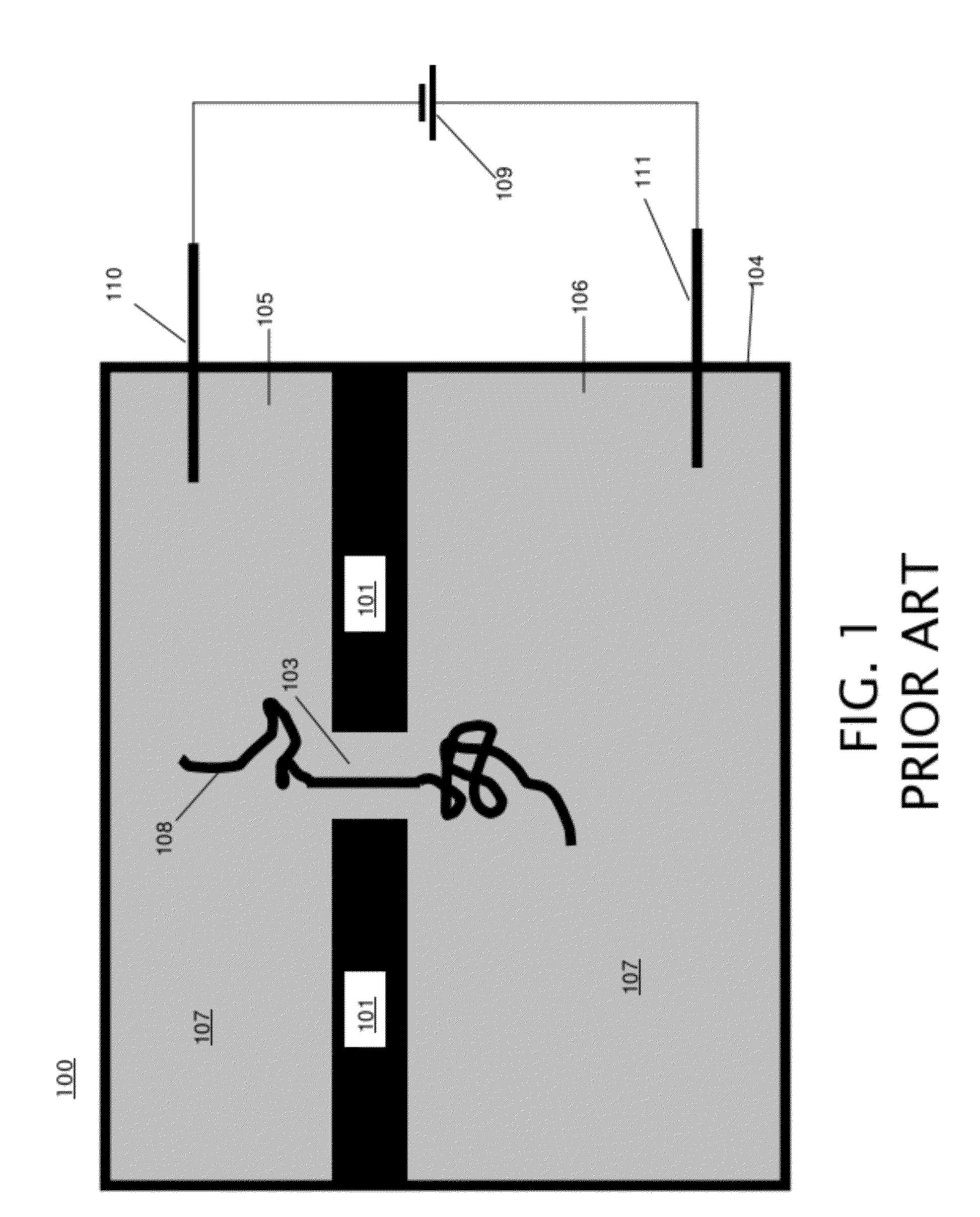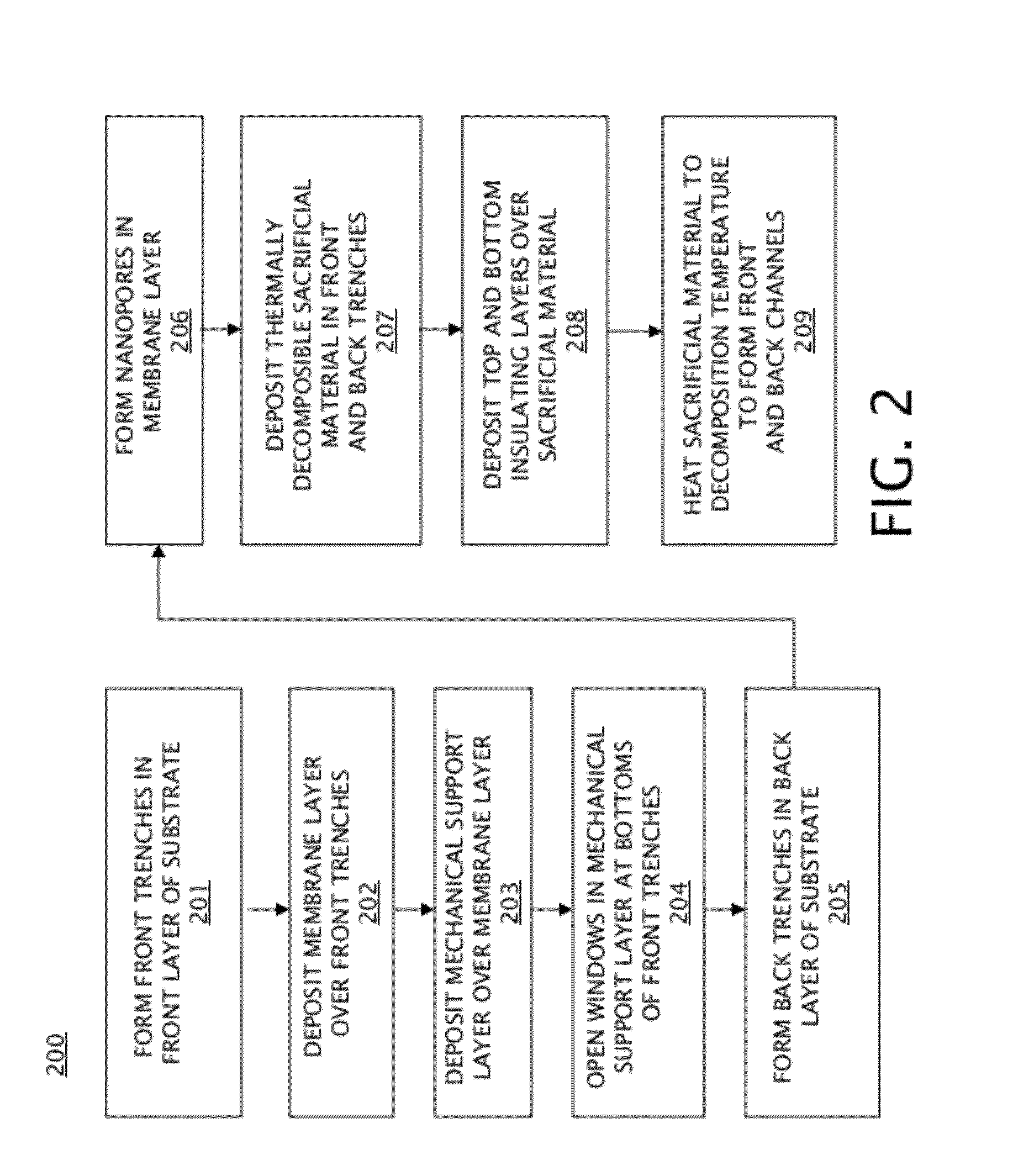Self-sealed fluidic channels for nanopore array
a fluid channel and nanopore technology, applied in nanosensors, material analysis, instruments, etc., can solve the problems of laborious and expensive coating, inability to fabricate a sensor with a spatial resolution in this range, and inability to meet the requirements of the sensor,
- Summary
- Abstract
- Description
- Claims
- Application Information
AI Technical Summary
Benefits of technology
Problems solved by technology
Method used
Image
Examples
Embodiment Construction
[0024]Embodiments of self-sealed fluidic channels for a nanopore array and methods of making self-sealed channels for a nanopore array are provided, with exemplary embodiments being discussed below in detail. Each human genome has about 3 billion base pairs, requiring breaking the genome into many parts and sequencing the parts in parallel to reduce the overall sequencing time and increase sequencing throughput. An array of individually addressable nanopores in conjunction with self-sealed channels for DNA sequencing may significantly reduce the cost and time required for sequencing a human genome by allowing sequencing to be performed in parallel by the various nanopores of the nanopore array. The self-sealed channels act as the fluidic reservoirs for the nanopores in the nanopore array, and are formed by integrated circuit (IC) manufacturing methods using a sacrificial material without the need for wafer bonding. Because the self-sealed channels are relatively small, the physical ...
PUM
| Property | Measurement | Unit |
|---|---|---|
| thickness | aaaaa | aaaaa |
| thick | aaaaa | aaaaa |
| thickness | aaaaa | aaaaa |
Abstract
Description
Claims
Application Information
 Login to View More
Login to View More - R&D
- Intellectual Property
- Life Sciences
- Materials
- Tech Scout
- Unparalleled Data Quality
- Higher Quality Content
- 60% Fewer Hallucinations
Browse by: Latest US Patents, China's latest patents, Technical Efficacy Thesaurus, Application Domain, Technology Topic, Popular Technical Reports.
© 2025 PatSnap. All rights reserved.Legal|Privacy policy|Modern Slavery Act Transparency Statement|Sitemap|About US| Contact US: help@patsnap.com



